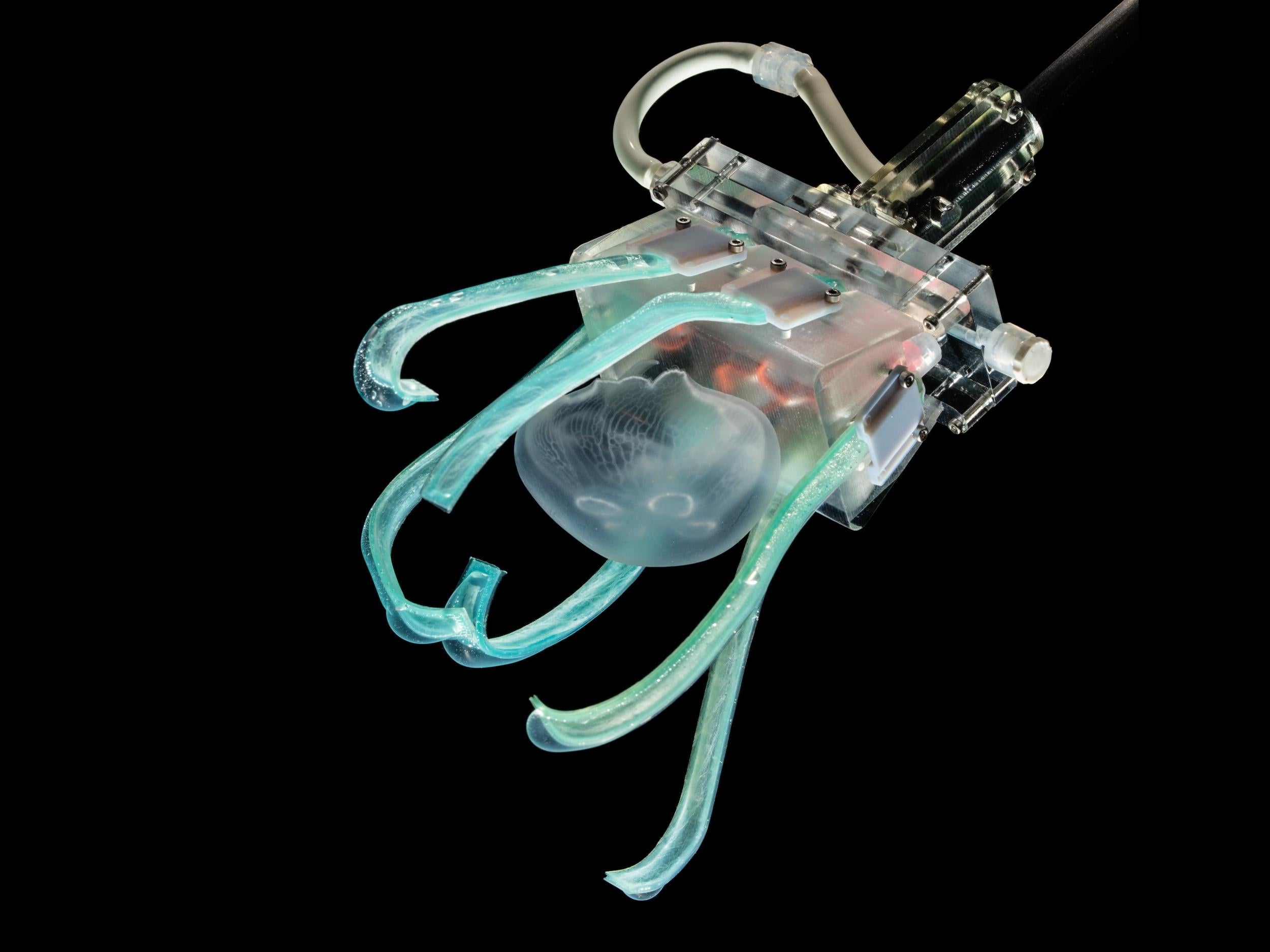Scientists use ‘soft linguine robot fingers’ to gently grasp jellyfish
Researchers say soft robots are 'a kinder way to handle some of the slipperiest organisms'
Your support helps us to tell the story
From reproductive rights to climate change to Big Tech, The Independent is on the ground when the story is developing. Whether it's investigating the financials of Elon Musk's pro-Trump PAC or producing our latest documentary, 'The A Word', which shines a light on the American women fighting for reproductive rights, we know how important it is to parse out the facts from the messaging.
At such a critical moment in US history, we need reporters on the ground. Your donation allows us to keep sending journalists to speak to both sides of the story.
The Independent is trusted by Americans across the entire political spectrum. And unlike many other quality news outlets, we choose not to lock Americans out of our reporting and analysis with paywalls. We believe quality journalism should be available to everyone, paid for by those who can afford it.
Your support makes all the difference.Scientists have developed "soft robotic linguine fingers" to safely scoop up deep-sea jellyfish when conducting undersea research.
The technology allows for researchers to study jellyfish without causing them significant stress or physical harm and the tools could one day be used to help rehabilitate stroke victims.
A study of the robotic fingers, published in the journal Current Biology, describes how soft robotics like these could transform ocean exploration.
Marine biologists currently use rigid robotics to take DNA swabs or capture underwater creatures in deep oceans, however this can cause great harm to fragile organisms like jellyfish
"Using genomics, we confirm that newly developed soft robots are a kinder way to handle some of the slipperiest organisms: jellyfish," said Michael Tessler, a post-doctoral fellow at the American Museum of Natural History who was involved in the research.
"With new technologies we can often make massive advances on techniques, like deep-sea animal handling."
Co-author Nina Sinatra added: "By expanding our toolbox of materials, engineers can unlock exciting and clever solutions to challenges that would notbe tractable for conventional robots."
The research is part of the nascent field of soft robotics, which ditches rigid parts typically found in traditional robots in order to deal with uncertain and changing tasks and environments.

Beyond interacting with delicate organisms, the researchers say the latest tools could be used for applications that directly benefit humans.
"They could be used to harvest fruits from trees without bruising them, rehabilitate the muscles of stroke patients, and many other things that rigid-bodied robots are just too clunky and overpowered to sccomplish today," said co-author Rob Wood.

Join our commenting forum
Join thought-provoking conversations, follow other Independent readers and see their replies
Comments